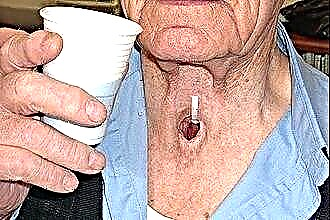On Internet resources and in popular medical literature, you can often see that sinusitis and sinusitis are presented as synonyms or equal names for the same disease. Although in specialized editions these terms are still differentiated. Further in the article we will consider what is the difference between sinusitis and sinusitis, and why these two concepts are often combined into one.
What are the sinuses
 Sinusitis is an inflammation of the mucous membranes of the paranasal sinuses. The paranasal sinuses are hollow spaces inside the air bones of the skull on the front side. These spaces are connected into a single system and have exits to the nasal cavity, their mucous internal integuments are almost the same and perform similar functions.
Sinusitis is an inflammation of the mucous membranes of the paranasal sinuses. The paranasal sinuses are hollow spaces inside the air bones of the skull on the front side. These spaces are connected into a single system and have exits to the nasal cavity, their mucous internal integuments are almost the same and perform similar functions.
To better understand how sinusitis differs from sinusitis, you need to dwell in more detail on the constituent elements of the inner part of the nasal system. Most people have four types of paranasal sinuses, otherwise called sinuses:
- The frontal (frontal) are located above the eyes in the thickness of the frontal bone (between its anterior and posterior walls). Newborn children do not have them, the formation of voids begins at 3 years old and lasts until the end of puberty. In a small part of people (about 5%), they do not form at all; in some, this cavity does not divide into two halves.
- The maxillary (maxillary) are located inside the upper jaw between the eye sockets and the upper teeth. They are the largest, can have a volume of up to 30 cubic centimeters.
- Wedge-shaped (main) are located deep inside the head, in the thickness of the sphenoid bone, in the immediate vicinity of the hard shell of the brain. They are divided by a bone septum into two separate parts, have a small volume. Like frontal, they develop in humans from 3 to 25 years old.
- Ethmoid labyrinth cells are located behind the bridge of the nose and are separate voids in the ethmoid bone. May vary markedly in size and shape. They are arranged in two rows of 5-15 pieces each. Divided into front, middle and inner.
Differences between sinusitis and sinusitis
All paranasal sinuses have mucous membranes and can become a site of inflammatory processes. Any inflammation in the area of cavities and inside them (infectious, fungal or allergic) is called "sinusitis". Depending on the localization in the sinuses, the following diseases are distinguished:
- frontal - frontal sinusitis;
- maxillary - sinusitis;
- wedge-shaped - sphenoiditis;
- lattice labyrinth - ethmoiditis.
Some experts identify another type - rhinosinusitis. This type combines the simultaneous inflammation of the mucous cavities and nasal passages, for example, a runny nose and frontal sinusitis.

Inflammation is classified according to several criteria:
- by localization - into one-sided and two-sided,
- by the type of inflammatory process - into exudative (with the accumulation of fluid inside) and productive (with tissue overgrowth);
- downstream - for acute and chronic.
Often in the medical literature, only those diseases that cover several adjacent cavities are called sinusitis.
When it comes to the defeat of the air cavities on one side of the face, this is called hemisinusitis. If the sinuses on different halves of the face are sick, then this is parasinusitis. The most severe case is inflammation of all the accessory cavities that a person has, such an ailment is called pansinusitis, and if not treated promptly, it can be fatal. Thus, it can be seen that the term "sinusitis" is collective in nature for all inflammatory processes in the air cavities, and the term "sinusitis" clearly indicates the localization of the disease in the maxillary sinuses.
Consequently, the opposition sinusitis or sinusitis has no basis. These are not different diseases, since sinusitis is a type of sinusitis. In other words, every sinusitis is sinusitis, but not every sinusitis is sinusitis.
Specific signs of various inflammations
Inflammatory processes in different sinuses arise for similar reasons: as a result of the pathogenic influence of bacteria, viruses or fungi, allergic reactions, hypothermia, damage and injury. However, they can be distinguished by their symptoms, each type of ailment, except for similar ones, has its own special signs that allow an initial diagnosis to be made.
Sinusitis is the most common disease of the accessory chambers.
 Its main features are specific enough to distinguish them from other inflammations:
Its main features are specific enough to distinguish them from other inflammations:
- an increase in body temperature up to 38 degrees and above, sometimes chills;
- severe congestion of the passages, most often one nostril;
- headache, which is sometimes joined by a toothache;
- thick yellowish-green nasal discharge;
- coughing up phlegm in the morning;
- unpleasant pressure in the cheekbones, especially when the head is tilted forward;
- pain is felt on palpation of the nose;
- general weakness and fatigue;
- occasionally cough and sore throat due to mucus that flows profusely down the throat.
Frontitis, according to medical statistics, ranks second in prevalence. It is worse than other species tolerated by patients, since it has more intense symptoms:
- due to an increase in intracavitary pressure, the pain is strong, pressing or throbbing. It is localized in the forehead, above the eye sockets and eyebrows. The most intense painful sensations in the morning, quickly subside with a spontaneous outflow of fluid through the connective canal;
- pain increases with palpation of the forehead or tilting the head, periodically there are "frontal colic";
- body temperature can reach 39 degrees;
- swelling of the upper eyelids and corners of the eye sockets;
- redness of tissues in the projection of the affected organ;
- complete absence or severe difficulty in nasal breathing;
- abundant purulent discharge from one or both passages, flowing into the oropharynx when the body is upright, a small amount of mucus in the supine position;
- lacrimation and photophobia;
- aching joints and bones, muscle weakness.
Ethmoiditis (inflammation of the cells of the ethmoid labyrinth) is much less common than the above types. Its specific characteristics:
- a feeling of fullness and fullness in the frontal-orbital segment and in the depths of the nasal cavity. The reason for this is the filling of the cells of the ethmoid bone with exudate, as well as the destruction of the cell walls under its influence;
- purulent masses can penetrate into the tissues of the orbit. This is noticeable by the swelling of the corner of the eye, as well as the upper and lower eyelids. The eyeball protrudes and deviates outward, pain occurs when it moves, as well as pulsating pains of neuralgic origin in the "forehead - nose - eye" triangle;
- visual acuity decreases, increased fatigue occurs when performing visual function;
 severe difficulty in nasal breathing due to obstruction of the nasal passages;
severe difficulty in nasal breathing due to obstruction of the nasal passages;- nasal discharge during the development of the disease transforms from serous in the initial stage to abundant purulent-mucous membranes with blood streaks at a later stage. This causes bad breath.
- even after otmarking, the patient has a feeling of fullness and the presence of a foreign object in the depths of the nose. In addition, the burning and itching sensation leads to uncontrolled sneezing;
- violation of the sense of smell;
- ear congestion;
- body temperature is subfebrile.
Sphenoiditis (inflammation of the sphenoid sinus) - is very rare due to the deep location of the voids inside the human skull, but it poses a great danger due to the direct proximity to the lining of the brain.
It is difficult to diagnose it due to the fact that the symptoms are muted and often hidden by the underlying disease that caused the sphenoiditis.
The characteristic symptoms of inflammation of the wedge-shaped cavity include:
- pain is localized in the region of the orbit, occiput and crown of the head, its intensity can range from moderate to painful;
- reduced visual acuity in case of damage to the optic nerve;
- breathing and sense of smell worsens;
- a feeling of a putrid odor and mucus in the throat with a chronic or purulent form of the disease;
- with complete obstruction of the connecting canal, all signs are sharply increased.
With the defeat of the anterior part of the sphenoid cavities, inflammation often covers the maxillary sinuses.
As can be seen from the above information, all lesions of the paranasal chambers have a similar etiology, however, say, sinusitis and ethmoiditis are not the same. Therefore, when on the page of a website devoted to the treatment of sinusitis, there is a periodic replacement of this term with "sinusitis", this is permissible, since it is a broader concept. If the article deals with sinusitis in general, then here you need to clearly delineate the terms in accordance with the place of localization of the disease.
Timely detection and prevention of diseases
 Due to the fact that inflammation of the maxillary sinuses is a fairly common phenomenon in our time, people often treat all inflammations of the paranasal cavities somewhat haughtily, as to diseases that are simple in therapy.
Due to the fact that inflammation of the maxillary sinuses is a fairly common phenomenon in our time, people often treat all inflammations of the paranasal cavities somewhat haughtily, as to diseases that are simple in therapy.
Most of the population often does not know anything about other types of similar diseases.
At the same time, late diagnosis and untimely treatment can lead to complications with extremely serious consequences:
- meningitis (inflammation of the cerebral cortex) and arachnoiditis (damage to the arachnoid part of the brain);
- optic neuritis;
- brain abscess;
- phlegmon of the eye orbit;
- destruction of the osteotissue of the facial bones.
At home, the development of ailments can be suspected by a very indicative symptom - the severity and pressing pains in the forehead, brow ridges and cheekbones in the projection of the voids located there. Palpation in these places is also painful, pressure on the skin in the middle of the cheek and near the corner of the eye indicates a possible lesion. After that, you need to go to the hospital for an otolaryngologist, since a more accurate diagnosis can only be made with the help of special equipment (X-ray, MRI).
You can reduce the chance of developing sinus inflammation by taking preventive measures:
- timely and correct treatment of colds respiratory ailments;
- strengthening general and local immunity;
- taking vitamin and mineral complexes in autumn and spring;
- regular rinsing of the nasal cavity with saline solutions;
- active lifestyle and healthy nutritious food;
- elimination of external irritants such as cigarette smoke and allergens.

 severe difficulty in nasal breathing due to obstruction of the nasal passages;
severe difficulty in nasal breathing due to obstruction of the nasal passages;

